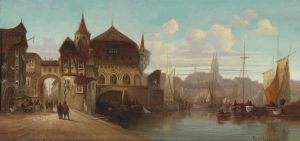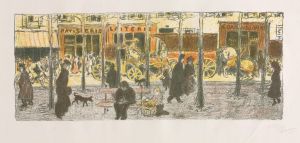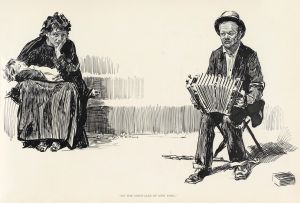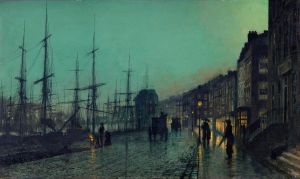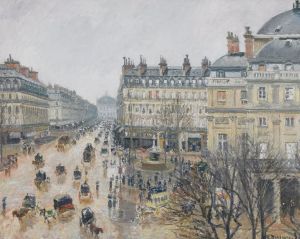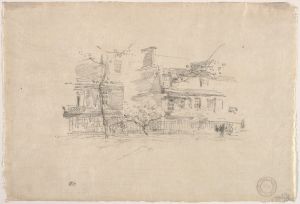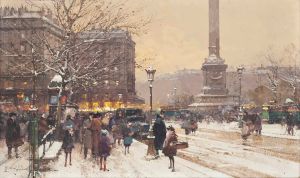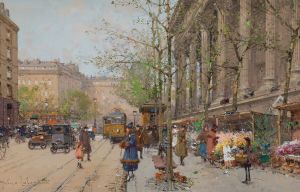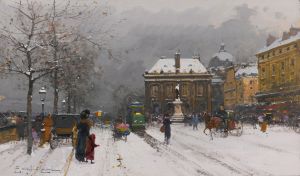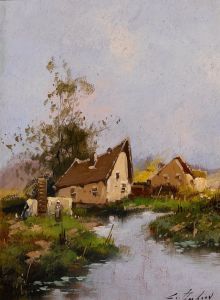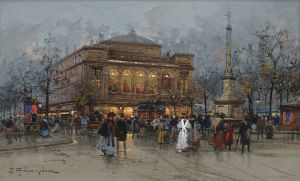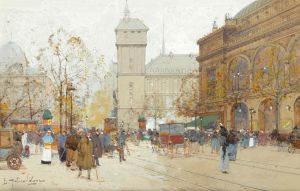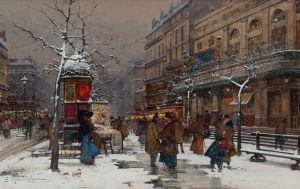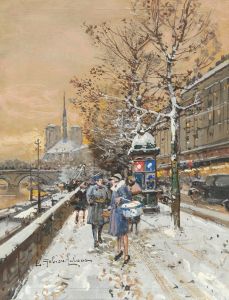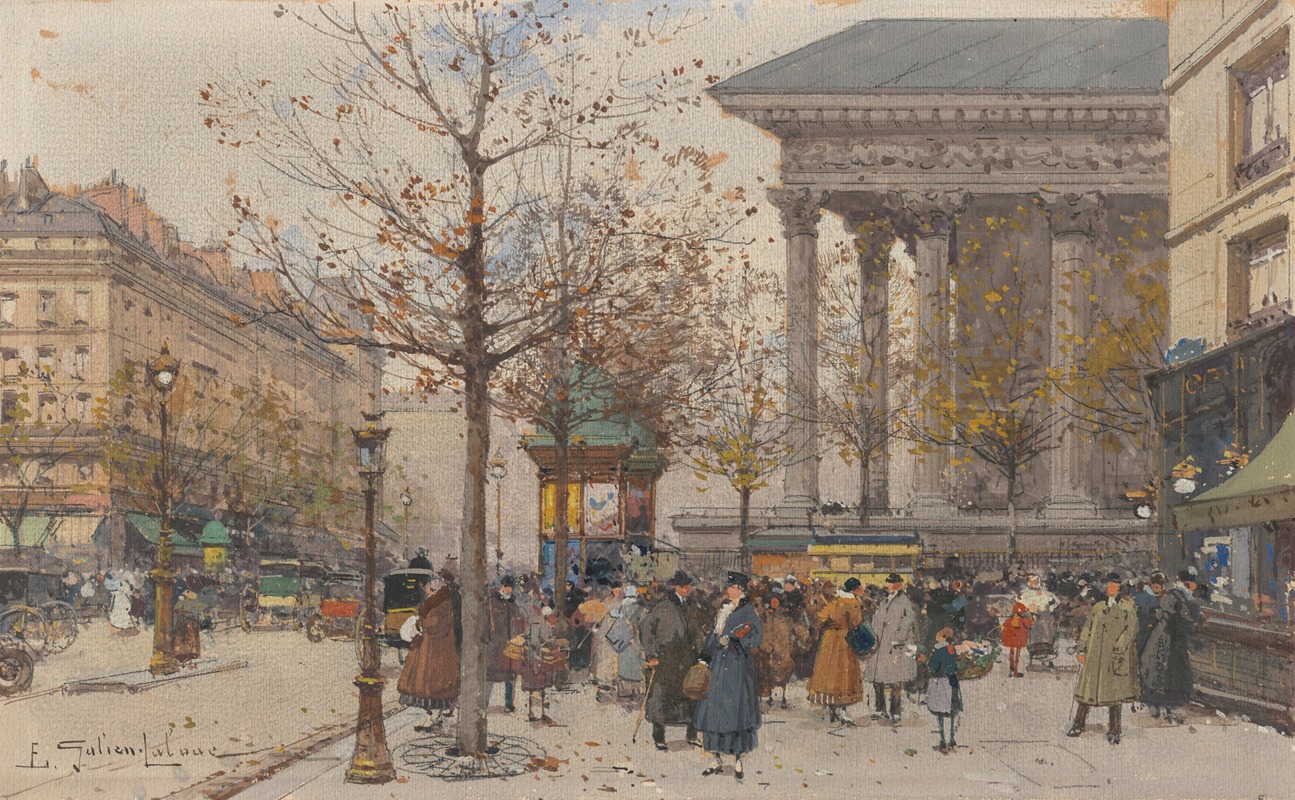
Vue animée de la Madeleine
A hand-painted replica of Eugène Galien-Laloue’s masterpiece Vue animée de la Madeleine, meticulously crafted by professional artists to capture the true essence of the original. Each piece is created with museum-quality canvas and rare mineral pigments, carefully painted by experienced artists with delicate brushstrokes and rich, layered colors to perfectly recreate the texture of the original artwork. Unlike machine-printed reproductions, this hand-painted version brings the painting to life, infused with the artist’s emotions and skill in every stroke. Whether for personal collection or home decoration, it instantly elevates the artistic atmosphere of any space.
Eugène Galien-Laloue was a French artist known for his picturesque depictions of Parisian street scenes and landscapes. Born in 1854, Galien-Laloue became renowned for capturing the essence of Paris during the late 19th and early 20th centuries. His works are characterized by their vibrant colors, attention to detail, and lively portrayal of urban life. One of his notable works is "Vue animée de la Madeleine," which translates to "Animated View of the Madeleine."
"Vue animée de la Madeleine" is a painting that exemplifies Galien-Laloue's skill in capturing the bustling atmosphere of Paris. The painting depicts the area around the Madeleine Church, a prominent landmark in Paris known for its neoclassical architecture. The church itself is dedicated to Mary Magdalene and is situated in the 8th arrondissement of Paris. It is an iconic structure that has been a subject of interest for many artists due to its grandeur and historical significance.
In Galien-Laloue's painting, the viewer is presented with a lively street scene that showcases the daily life of Parisians during that era. The painting is likely set in the early 20th century, a period when Paris was undergoing significant changes and modernization. The streets are filled with people going about their daily activities, which might include shopping, socializing, or simply enjoying a stroll. The presence of horse-drawn carriages and early automobiles suggests a transitional period in transportation, reflecting the technological advancements of the time.
Galien-Laloue's technique often involved the use of gouache, a type of opaque watercolor, which allowed him to achieve a rich texture and depth in his paintings. His ability to capture light and shadow adds a dynamic quality to his work, bringing the scene to life. The colors in "Vue animée de la Madeleine" are likely vibrant, with a palette that includes warm earth tones and cool blues, typical of his style.
The artist's attention to architectural details is evident in the way he renders the Madeleine Church and the surrounding buildings. This attention to detail not only highlights his technical skill but also serves to document the architectural landscape of Paris during that period. Galien-Laloue's work is often appreciated for its historical value, providing a window into the past and allowing contemporary viewers to experience the charm and elegance of early 20th-century Paris.
Eugène Galien-Laloue's paintings, including "Vue animée de la Madeleine," are part of numerous private collections and have been exhibited in various galleries. His work continues to be celebrated for its contribution to the genre of urban landscape painting and its ability to evoke a sense of nostalgia for a bygone era. Through his art, Galien-Laloue has left an enduring legacy that captures the spirit and vibrancy of Paris, making his paintings cherished by art enthusiasts and historians alike.





